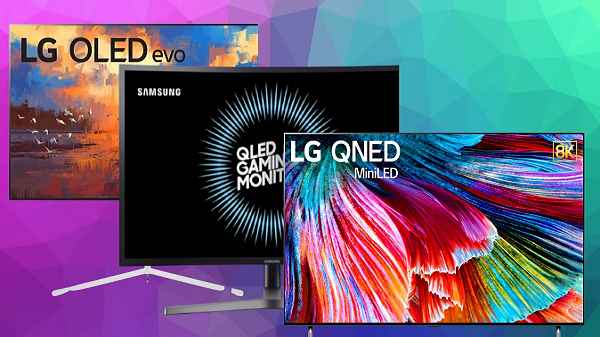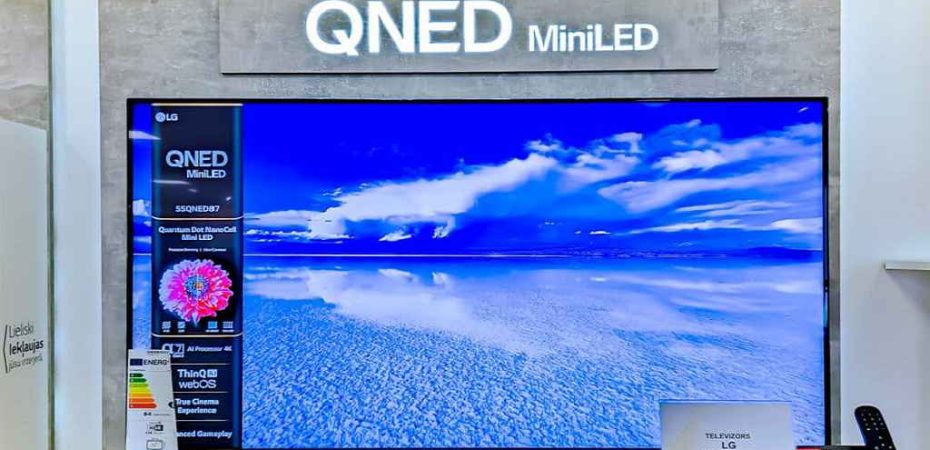In the ever-evolving world of display technology, QNED is a term that’s been generating quite a buzz. But what exactly is QNED, and why should you care about it? In this article, we’ll take you on a journey into the fascinating realm of Quantum Nano-Emitted Diode technology. We’ll explore its origins, its working principles, and its potential to revolutionize the way we view and interact with displays. So, let’s dive right in!
Understanding the Basics of QNED

Quantum Nano-Emitted Diode, or QNED, represents a groundbreaking advancement in the field of display technology. At its core, QNED combines the principles of quantum dots and OLED (Organic Light-Emitting Diode) technology to create displays that offer unparalleled clarity, color accuracy, and energy efficiency.
The Quantum Dot Connection
QNED displays rely heavily on quantum dots, which are nanometer-sized semiconductor particles. These dots emit light of specific colors when exposed to energy. The ability to precisely control the size of quantum dots allows for the creation of incredibly vibrant and accurate colors in displays.
The Role of OLED
OLED technology, known for its self-emissive properties, eliminates the need for a separate backlight in displays. This results in deeper blacks, higher contrast ratios, and thinner screens. QNED combines these attributes with quantum dots to take display quality to new heights.
How QNED Works
To truly appreciate the innovation behind QNED, it’s essential to understand how it works.
Quantum Dots at Play
QNED displays start with a layer of quantum dots that emit different colors when stimulated by an electric charge. This serves as the foundation for producing a wide spectrum of colors with exceptional accuracy.
OLED Emission
Behind the quantum dots, an OLED layer comes into play. OLEDs emit light when an electrical current passes through them. In a QNED display, this emission is precisely controlled, resulting in vibrant and lifelike colors.
The Magic of Nanotechnology
The combination of quantum dots and OLED in QNED displays creates an astonishingly thin and energy-efficient display. The nanoscale size of quantum dots and the self-emissive properties of OLEDs reduce power consumption while delivering stunning visuals.
Advantages of QNED Displays

QNED technology offers several compelling advantages over traditional display technologies.
1. Unmatched Color Accuracy
With quantum dots enhancing color reproduction and OLED providing true blacks, QNED displays offer an unrivaled level of color accuracy and contrast.
2. Energy Efficiency
Thanks to the efficient use of quantum dots and OLEDs, QNED displays consume less power, making them environmentally friendly and cost-effective.
3. Thinner Screens
The absence of bulky backlights results in incredibly thin and sleek QNED displays, perfect for modern aesthetics.
4. Wide Viewing Angles
QNED displays maintain their color accuracy and brightness even at wide viewing angles, ensuring a great visual experience from any perspective.
Potential Applications
QNED technology opens the door to various exciting applications.
1. Home Entertainment
QNED TVs promise an immersive home theater experience with stunning visuals and energy efficiency.
2. Gaming
Gamers can enjoy faster response times and vibrant colors, enhancing the gaming experience.
3. Healthcare
High-resolution QNED displays can be used in medical imaging for more accurate diagnoses.
4. Automotive
QNED displays in vehicles can provide sharp and clear information to drivers and passengers.
The Future of QNED
As QNED technology continues to evolve, we can expect even more impressive developments in the world of displays. From larger and thinner screens to applications in augmented and virtual reality, the possibilities are vast.
FAQs (Frequently Asked Questions)
1. Is QNED the same as OLED technology?
No, QNED combines quantum dots and OLED technology to create displays with improved color accuracy and energy efficiency.
2. Are QNED displays available in the market?
As of now, QNED displays are still in the development phase, but they are expected to hit the market in the near future.
3. What advantages do QNED displays offer over traditional LCDs?
QNED displays offer better color accuracy, energy efficiency, and thinner screen designs compared to traditional LCDs.
4. Can QNED technology be used in mobile devices?
While QNED technology is primarily aimed at larger displays like TVs, there is potential for it to be used in mobile devices in the future.
5. How does QNED technology impact the environment?
QNED displays consume less power, making them more environmentally friendly than many other display technologies.
Conclusion
In conclusion, QNED, or Quantum Nano-Emitted Diode technology, represents a significant leap forward in the realm of display technology. With its exceptional color accuracy, energy efficiency, and thin design, QNED displays are poised to reshape our visual experiences in various fields. Keep an eye on this innovative technology as it continues to revolutionize the way we view the world around us.
Read also:
- Razer Iskur Hands-On Review
- Building a financial future for your children: four practical ways to save money
- www.Netflix.com/tv8 – Activate Netflix on Your TV
- We Restrict Certain Activity To Protect Our Community
- Why Did NASA Stop Exploring The Ocean?
- 5 Ways To Fix “Ask To Buy Not Working on iPhone, iPad, and Mac”
- How to Unblock Your IP Address After Being Temporarily Blocked
- Kaiser My HR KP Login Guide Step by Step [HR Connect Kaiser Permanente]



